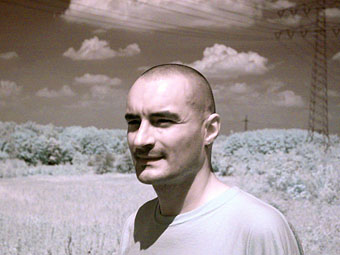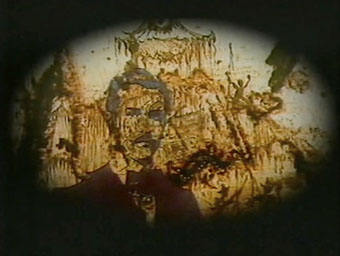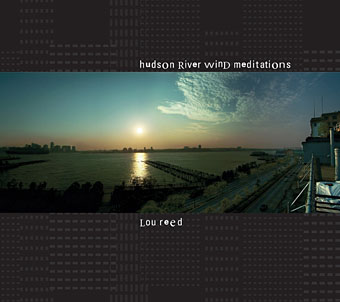
If Main (subject of this earlier post) provide the ideal ambience for hot weather, then winter demands the chill breath of Thomas Köner. Once again, lack of decent interviews means resorting to Wire back issues which is a sign of laziness on my part and an indication of that magazine’s continued importance. For those who may have puzzled over the soundtrack list in my Haunter of the Dark book (which includes Köner’s Teimo), here’s an introduction to a unique sound artist.
The Big Chill
The arctic wastes of Siberia are a burning desert compared to the cryogenically-frozen music of Thomas Köner. Biba Kopf meets a musician whose work redefines our notions of cool.
APPROPRIATELY ENOUGH, it snows the day Thomas Köner arrives in London. If anyone deserves a white carpet welcome, it is this German composer, who dedicates his music to reversing the processes of global warming. Köner’s stunning or perhaps that should read numbing debut, Nunatak Gongamur, describes the last moments of Scott’s ill-fated polar expedition. Its successor, Teimo, takes as its model the cooling molecular structure of the body after death, while his third disc carries the self-explanatory title Permafrost.
Granted, Köner’s new CD Aubrite—meaning a non-terrestrial mineral—is housed in a bright yellow jacket and is intended as a partial relief from the cold spell, but it does include a track called “Nuuk”, after the capital of Greenland.
“It’s my passion, this area where the cold slows down all movement,” explains Köner, who punctuates his conversation with a laugh so infectious he ought to can it and sell it to TV sitcom producers. “The process of slowing down and reaching this border between movement and absolute stillness is, for me, the process of simultaneously becoming very sharp and very unfocused, and that, for me is like a very excellent drug.”
This makes me think of Köner as some kind of flatliner getting off on his own near-death experiences.
“It’s a kind of design question, this temperature thing. In a cold environment, everything slows down, and everything is going towards a stop event. And that is my favourite area in sound—just before it stops. It’s an interesting border. It’s the same when people, during kind of philosophical evenings, think about life and its end. That’s also a kind of border where things stop. It’s a deep movement for me, this feeling.”
The development of Köner’s music from disc to disc is as minutely graded as the pieces they contain. The desolate blizzard-swept arctic wastes of Nunatak are created by miking-up gongs, then rubbing, scraping and electronically treating the sounds to the point where their origin is unrecognisable. Teimo is more felt than heard, you don’t so much listen as immerse yourself in it. As your ears become accustomed to its silences, you begin to pick out shapes, the shadowy aural equivalents of towering rock formations just about visible through the storm. They don’t exactly hold the promise of shelter, but they are useful coordinates to fix on to find your way into the music’s desolate beauty.
Exactly where does Köner’s music exist? His press kit carries a glowing endorsement from an Australian Buddhist, but, despite the music’s progress towards silence and nothingness, Köner denies any religious motivation. On the contrary, this confessed non-dancer, who admits the rhythms of his works are far removed from dance culture, feels closest to Techno, which has blasted contemporary music wide open to the point where any extreme goes in its chill-out interzones. Köner evidently feels enough common ground between Techno’s BPM blizzards and the snowstorms of his own music to act as sound designer on the recent Basic Channel related project Porter Ricks, on the appropriately-titled single “Port Of Transition”.
Köner has described the guiding principle behind his work as an Ästhetik der Untergang, or aesthetic of decline, a term Einstürzende Neubauten used to apply to their early performances. Unsurprisingly, Köner applies the aesthetic differently. For him it has to do with the way the natural decay of sound resembles decay in nature. The former leads to silence, the latter to death. In both cases they leave an afterglow that imprints itself on the memory. Köner’s acceptance of the process is not only personally liberating, it frees his music from the futile sense of entropy that pervades much post-Industrial Ambient stuff. Even so, Köner reports that the rare visitors to his Dortmund home see some affinity between the post-Industrial sites of a city that has seen better days and their host’s music.
“They walk around Dortmund and say that it sounds a bit like my music,” says Köner. “There are vast areas where there are no used roads, but you always have a distant railroad or a distant highway, creating an envelope of diffused sounds, so when you walk through these abandoned industrial fields, there is this silence, but with very powerful motorised sound reproducing units in the distance. And I would not give up this. I would never move to the country. Well, it’s sometimes nice to visit; but after three weeks I have to go to the nearest town, sit down and get some good diesel engines and scraping metal sounds. It’s a big pleasure for me.”
The Wire, issue 145, March 1996.
See also: koener.de




